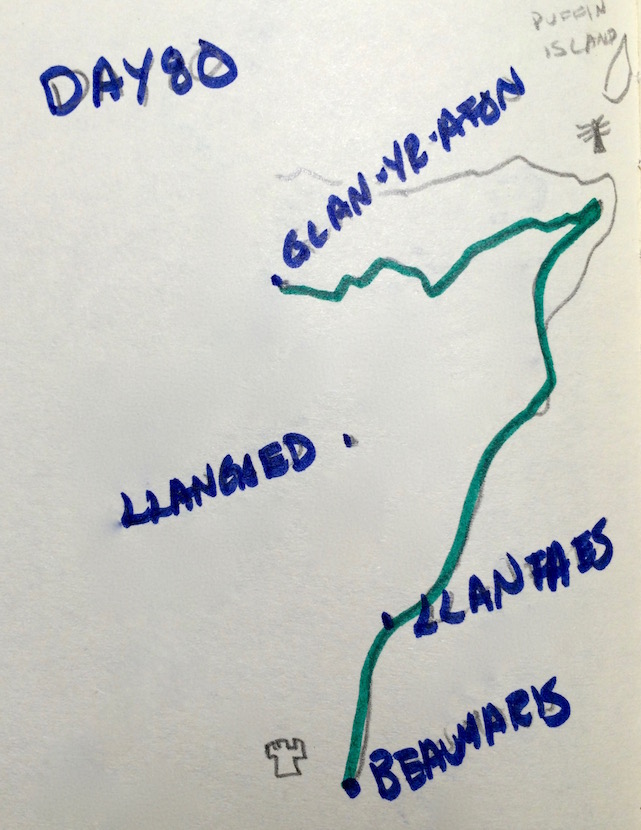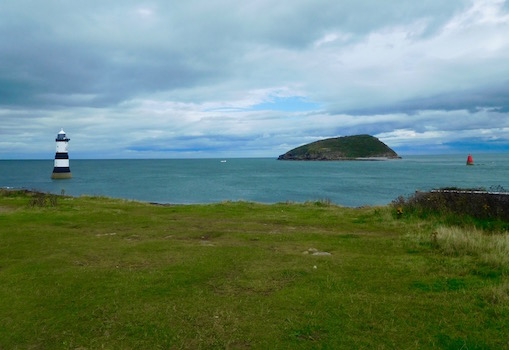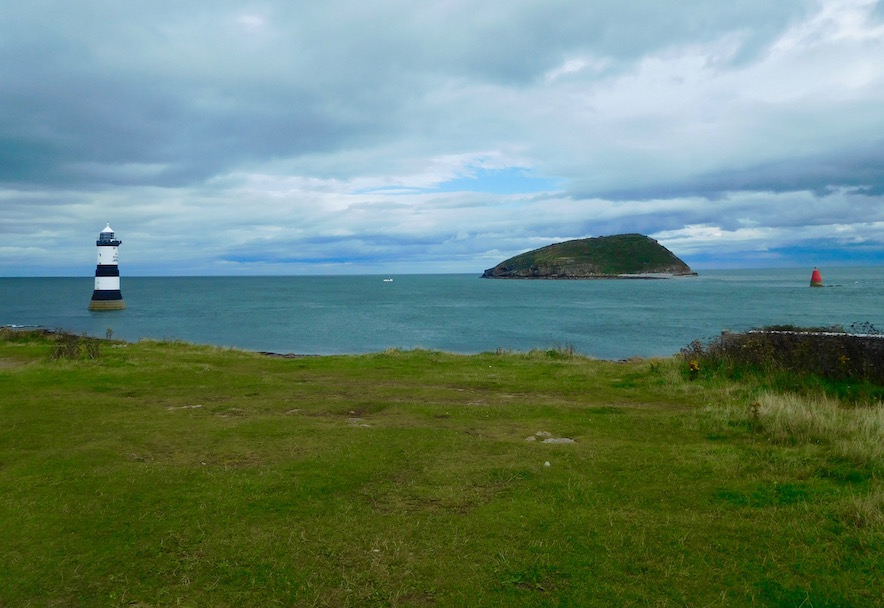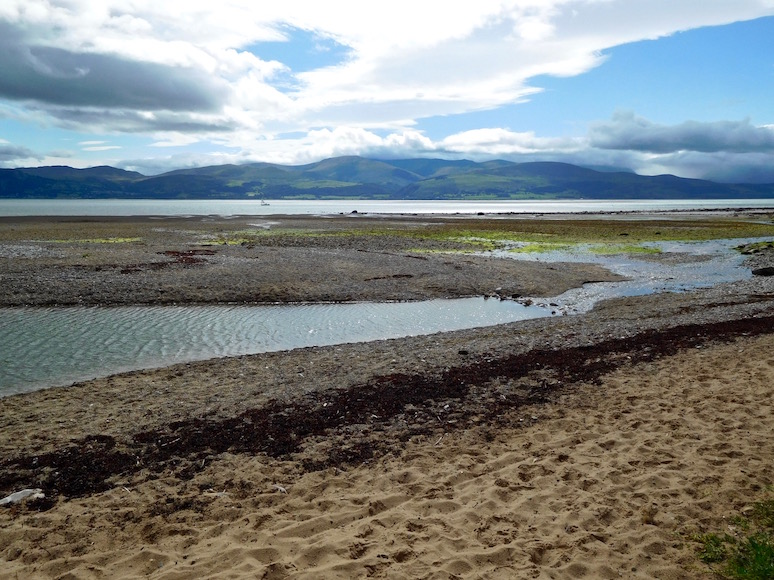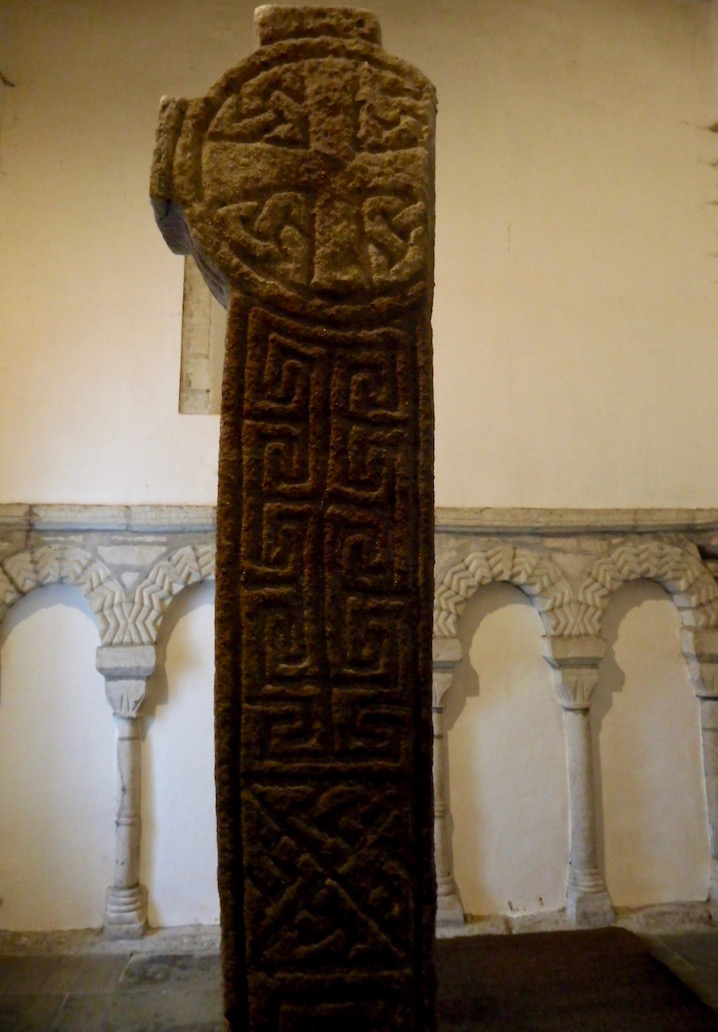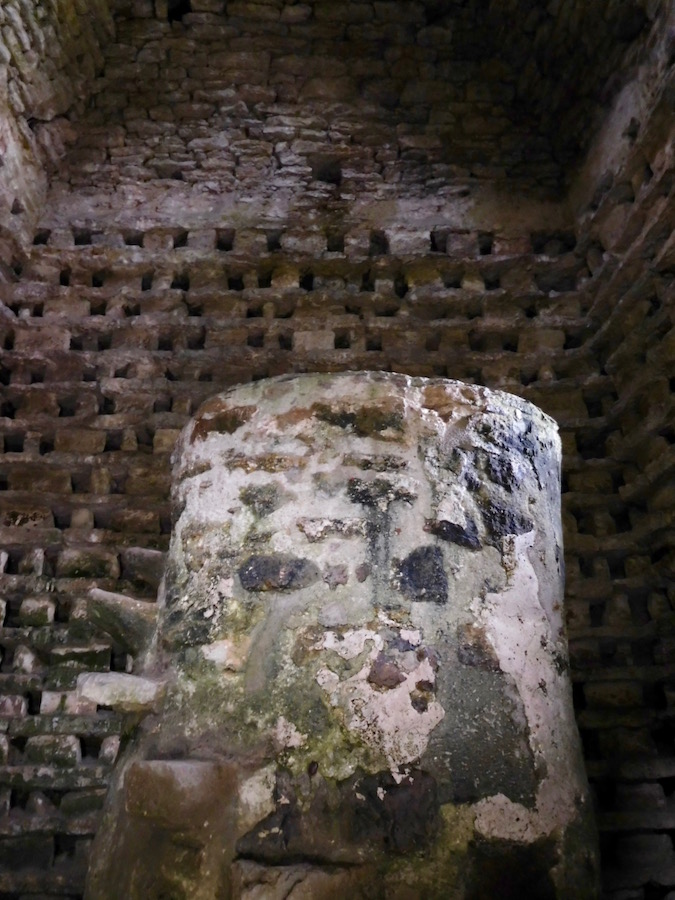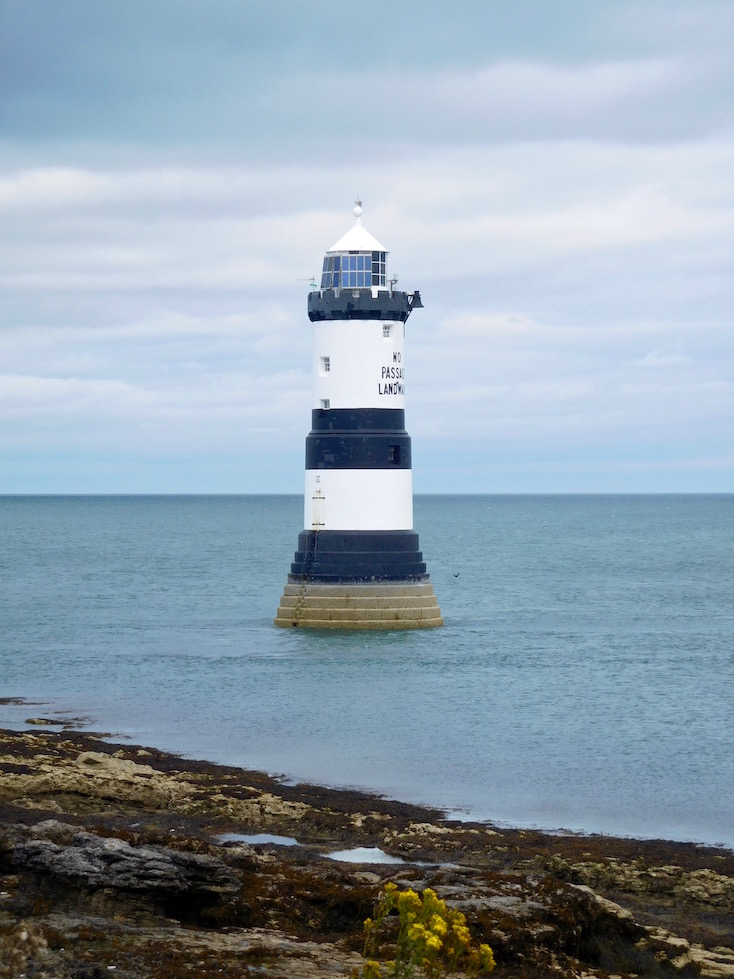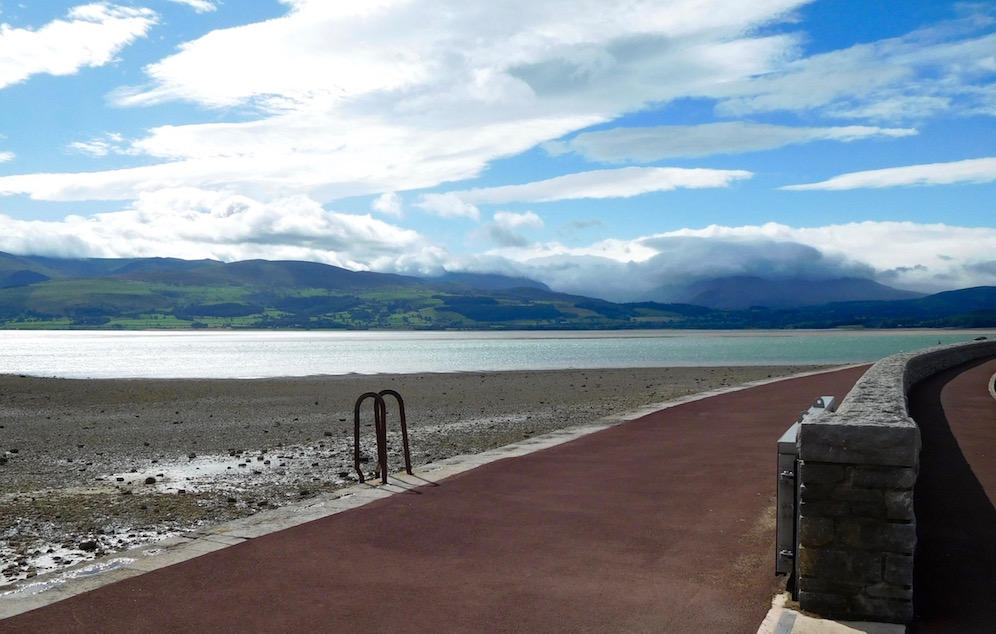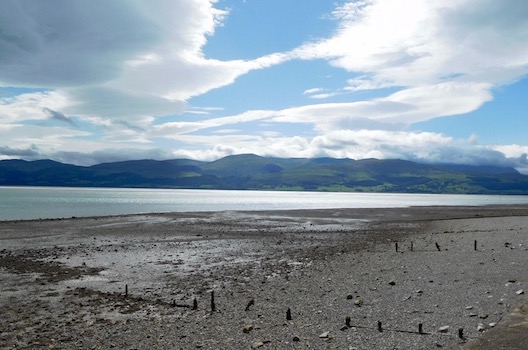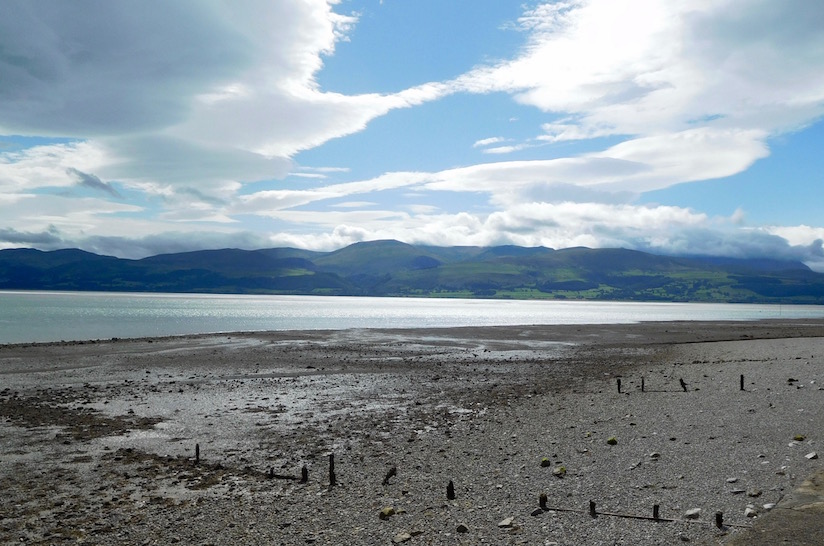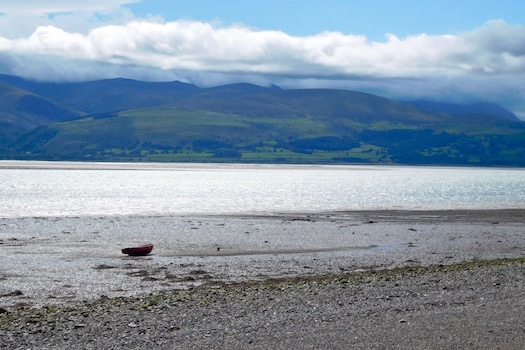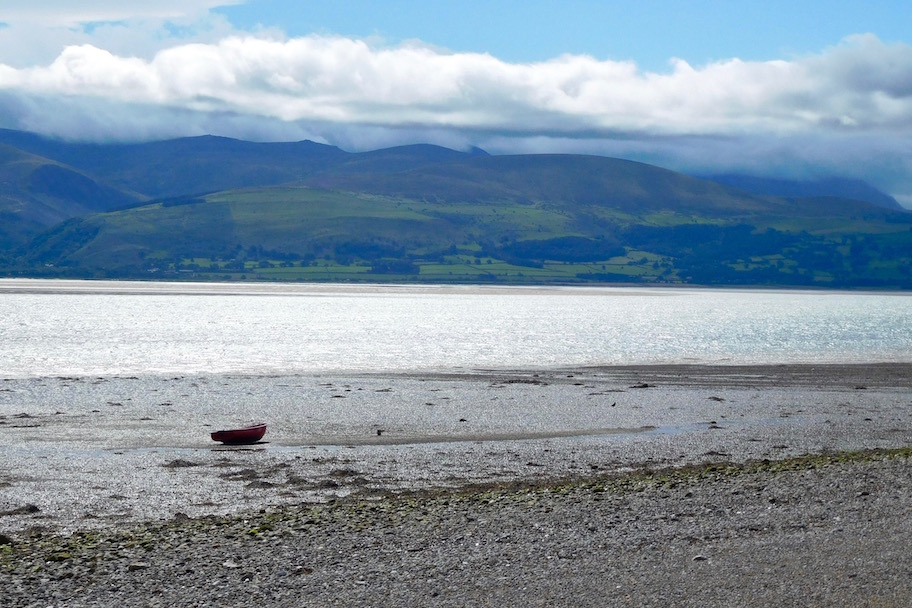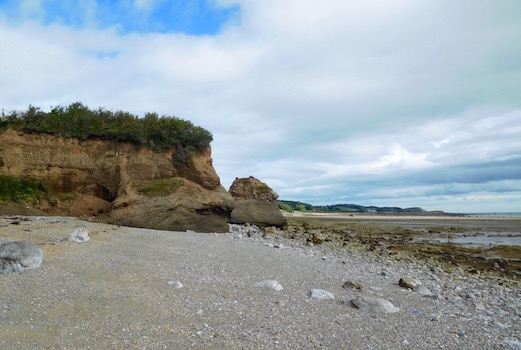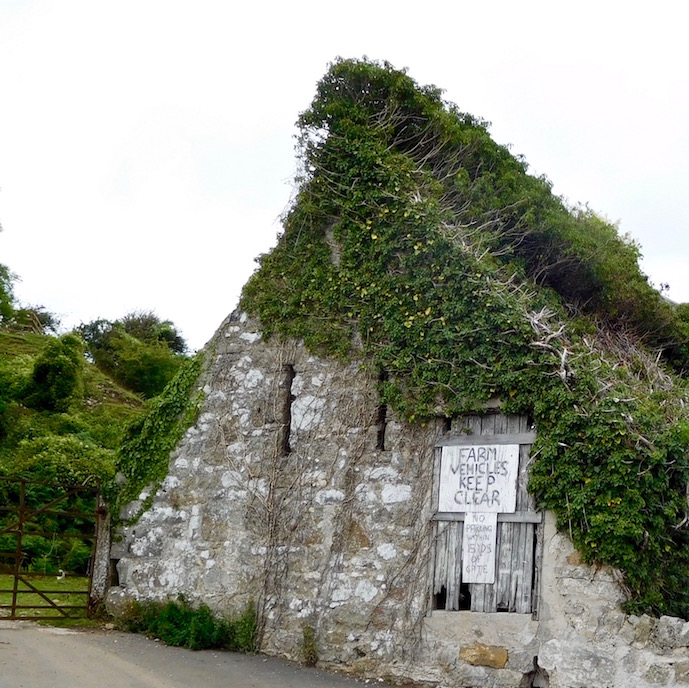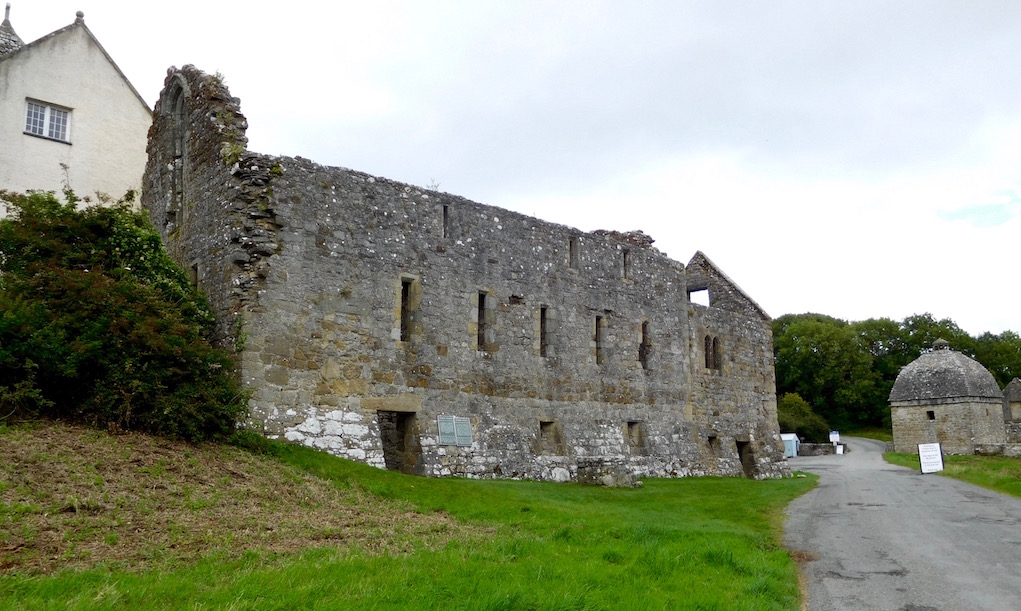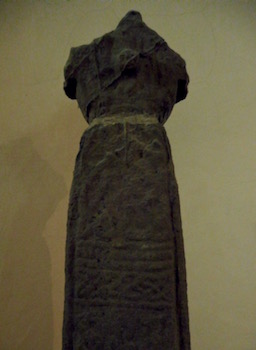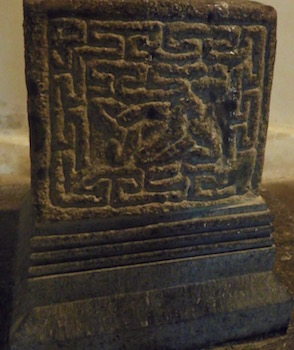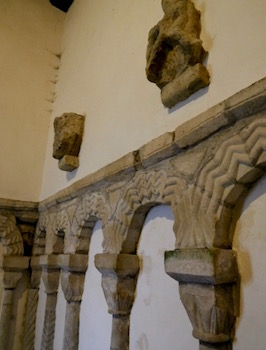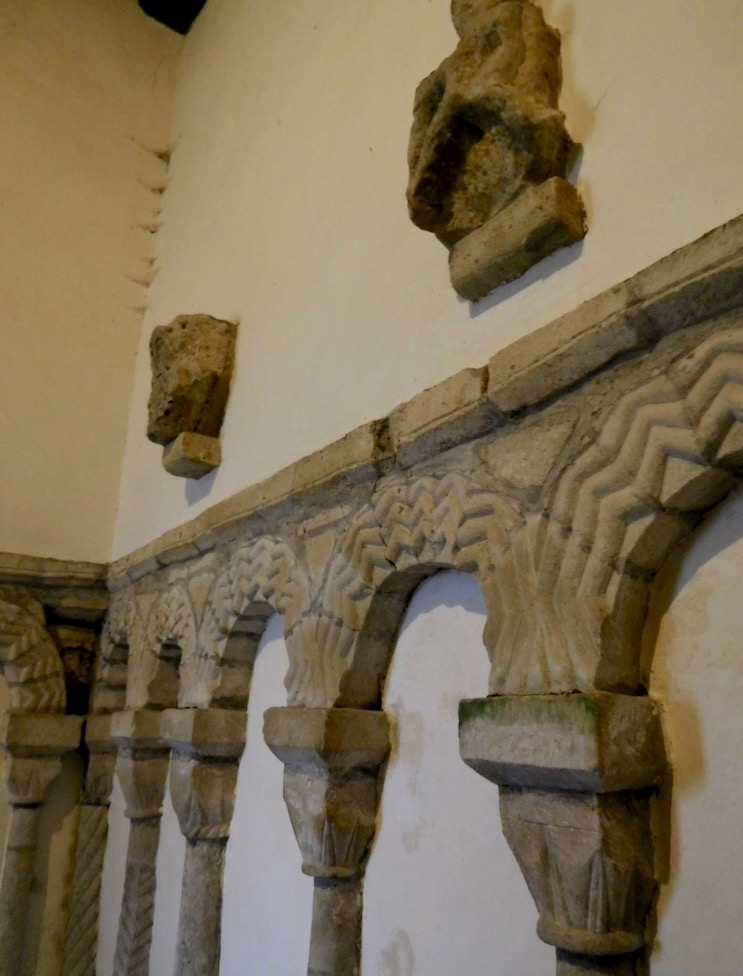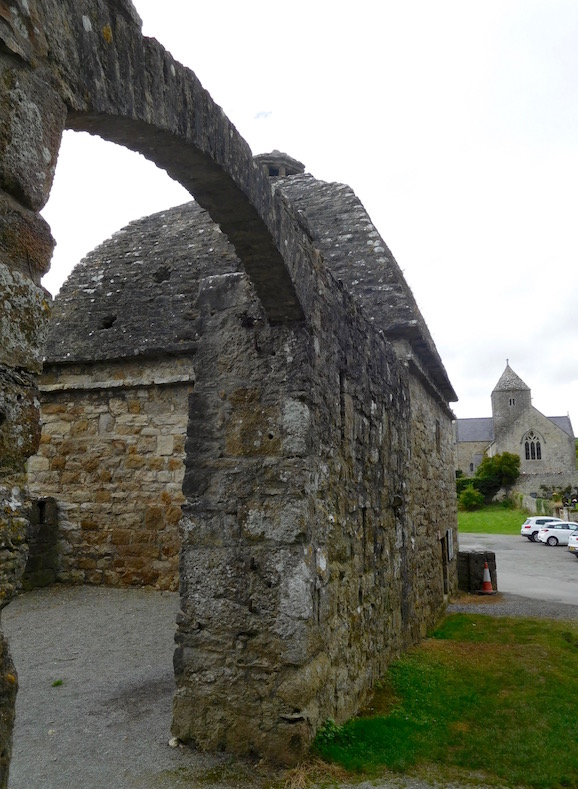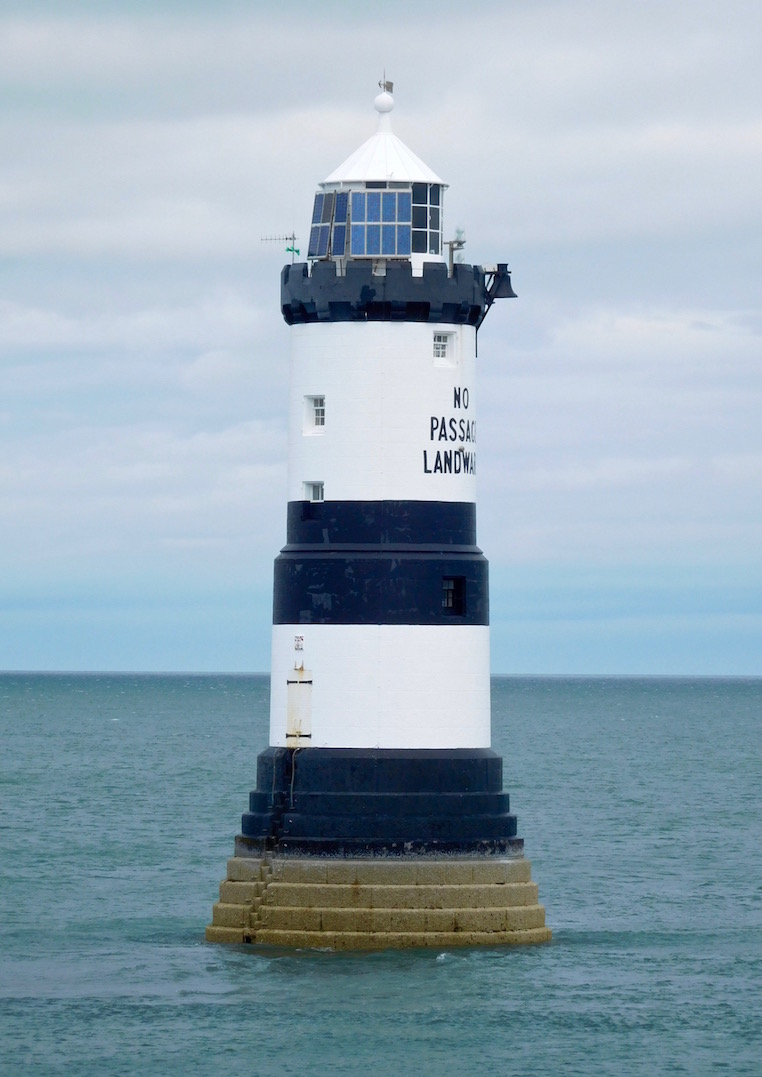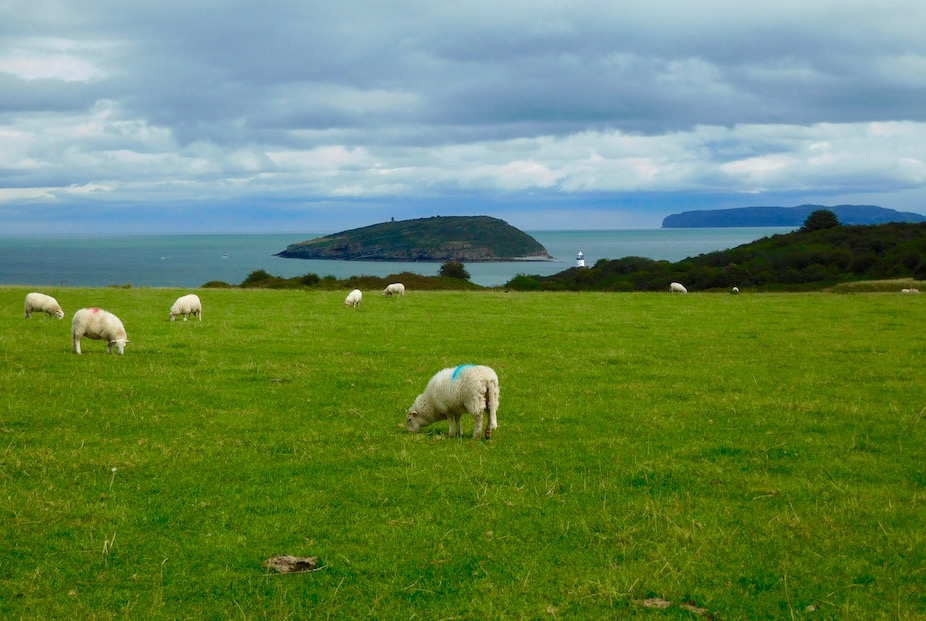Day 80
Beaumaris to Glan yr Afon: 7 miles
Saint of the Day: St. Seriol
Reason: He built his refuge among the puffins. Seems like a great idea.
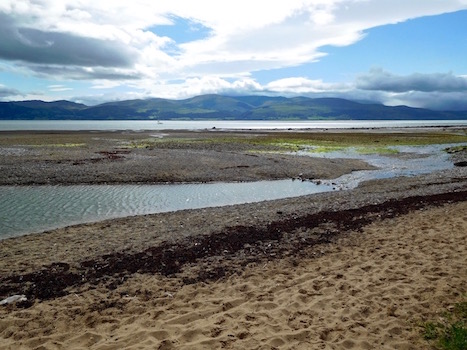
What a perfectly pleasant walk!
Well, except for some of the roads that is.
Heading off from Beaumaris, just south of the castle, the views were lovely all around - echoes of yesterday. The castle on one side, the Menai Strait and the mountains of Snowdonia on the other, and the the path gently undulating up and down through a few fields.
Then the fields switched to a walk along a beach, at first rocky, then alongside crumbling caves and promontories, and then back up off the beach to a road that skirted the coast.
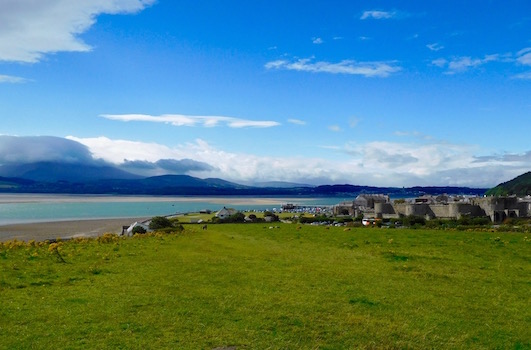
At first the road was fine - there were still the great views, and the low lying landscape meant cars could see me, and I could see them. And then suddenly it wasn't. As the road cut inland, it narrowed to a single twisty track with completely blind corners and absolutely no edge. It was like walking inside a curvy tube with high hedge walls.
Cars and vans were coming every minute or so, and they weren't exactly going slow. Each time I heard a car I would both try to make myself more noticeable while at the same time throwing my body as much as possible into the hedge to avoid being hit - which when you think about it is no small feat. At certain particularly hairy corners, I just said screw this and ran until I was in a better place.
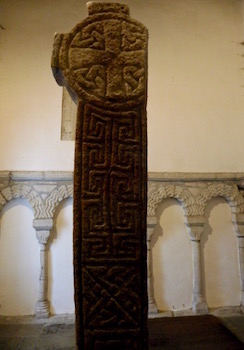
Eventually though, the road reached a cute little cloister of ancient buildings which I hadn't realized I'd be coming across today (which is weird because the book I'm using clearly says they're there, but I guess I'm just not paying attention so well right now.) This is Penmon, which means 'end of Anglesey', and includes a 13th century refectory, a Norman church, and a giant 17th century dovecot, as well as a well.
What's a dovecot, you might ask? Well, they provided space for nests of birds. And if you think that it's about just being nice to the birds or some kind of zoo, think again. It provided nesting space for birds like pigeons so that the owners would have a constantly supply of pigeon meat at their disposal. Mmmm. Pigeon. This particular dovecot is pretty enormous, with over 900 holes for nesting pigeons, and giant stone pedestal in the middle likely used to give better access to the nests.
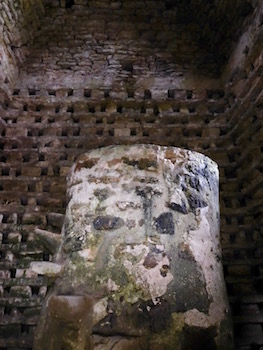
I went in here rather quickly because I think there are still birds living in here, and I'm fairly certain something was trying to poop on me.
I spent more time in the church. St. Seriol originally founded a Welsh monastery here in the 6th century, which was changed to an Augustinian Priory in the 13th century. The church is mostly from the later time period, and one half is largely Norman architecture, including the square tower (the other half is from the 18th century). Walking in I immediately stumbled upon two Celtic crosses, the 10th century Penmon Crosses which apparently have some Scandinavian-influenced scrollwork - one of which is a little worse for wear as until the 1970s it was kept outside in a deerpark.
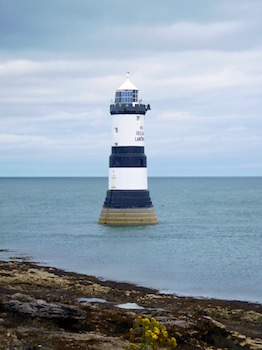
More puffins?
After wandering the grounds a bit more, I finally walked up the toll road towards Puffin Island, just off Black Point, Anglesey's eastern point. This was slightly less stressful than my previous road walking, because there were less cars - I assume that's because it's still a toll road.
As I walked down the hill, I could see Great Orme and mainland north Wales in the distance, and then eventually a black and white striped lighthouse and Puffin Island. This was apparently St. Seriol's retirement villa when the hustle and bustle of crazy downtown Penmon got to much for him. He'd kept a sanctuary here and a chapel back in Penmaenmawr, and apparently used to cross back and forth from Anglesey to Puffin Island to Penmaenmawr via a sand bank that no longer exists. The island is also known as St. Seriol's in Welsh because of his use - though there's not much of what he built left.

For that matter, apparently there aren't that many puffins left either - although I understand they're doing better than in the 19th century when the island became infested with rats, and humans looking for puffin meat - a delicacy at the time. Since the recent killing of the rats, the colony has grown to a healthier size. There are boat trips you can take to see them flying around - nothing was visible from the mainland, though I don't know if they've already taken off for the winter anyway. I thought about taking a boat trip - but decided Skomer was such a great time I didn't need more puffins (which is a lie because there can always be more puffins, but it seemed like a hassle to get out there).
Anyway, I continued on after getting a quick snack at the nearby cafe where the staff seemed to be a bit harassed given the number of people around (i.e. 20). The path went inland for a bit, through some fields, then back onto roads where I could see the fields and undulating hillsides of inner Anglesey. I was thinking it's pretty interesting how many different kinds of landscapes you can go through in one day in such a small place, when I realized I was probably in Glan-yr-Afon (hard to tell), and needed to stop here because although there wasn't much to the place - there was a bus stop.

